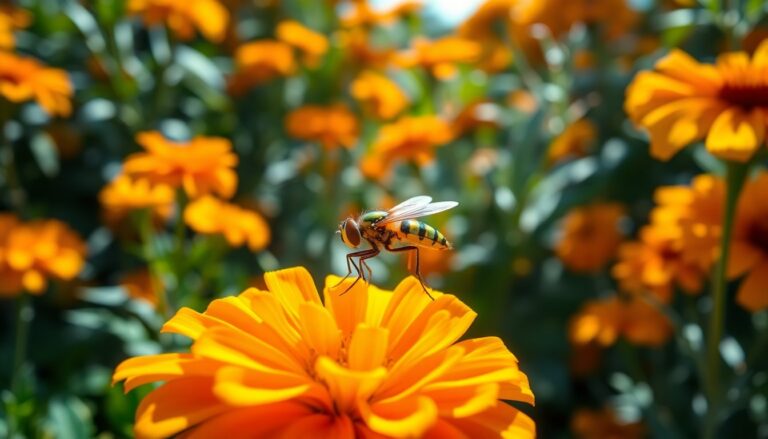Argomenti trattati
In the realm of entomology, numerous insects remain underappreciated and insufficiently studied. One such insect is the marigold fruit fly, scientifically known as Trupanea vicina. This intriguing fly contributes to the biodiversity of gardens and raises important questions about its ecological role, particularly for those who cultivate marigolds. Understanding this insect can yield valuable insights for gardeners and horticulturists alike.
The Characteristics of Trupanea vicina
The marigold fruit fly belongs to the tephritid family, a diverse group that includes over 4,000 classified species. This family is noted for its striking wing patterns, which serve multiple functions, from courtship displays to predator deterrence. Adult marigold fruit flies typically measure between 4 to 5 mm in length and feature banded or spotted wings that resemble intricate glass patterns, captivating anyone who encounters them.
While the marigold fruit fly may be confused with smaller kitchen fruit flies from the Drosophilidae family, tephritids are distinguished by their larger size and vibrant wing designs. This distinction is crucial for those monitoring garden pests, as tephritids include several species that significantly impact agriculture, such as the Mexican fruit fly and the olive fruit fly.
Ecological Interactions and Host Plants
Research indicates that T. vicina primarily develops within marigold flowers, where larvae feed on the flower heads. Although marigolds appear to be the preferred host for this fruit fly, further research is needed to understand its potential use of other aster species. Tephritids typically exhibit a high degree of specialization, often forming intricate relationships with their host plants, prompting questions about the ecological implications of their presence in diverse floral environments.
Currently, the marigold fruit fly has been observed in regions such as California, Arizona, and parts of Central America. However, its complete distribution remains to be systematically mapped. This is particularly significant for gardeners and researchers, as understanding its range could lead to improved management practices for those cultivating marigolds.
Implications for Home Gardeners
Despite its classification as a low-concern pest, the true impact of the marigold fruit fly on marigold plants remains unclear. The larvae feed on developing seeds, but it is uncertain whether this feeding behavior consistently affects flower quality or only during severe infestations. Recent reports from Southern California indicate a rise in encounters with this fly in home gardens, highlighting the need for gardeners to stay vigilant.
As gardeners, recognizing the signs of infestation and understanding the lifecycle of T. vicina can empower us to make informed decisions regarding plant care strategies. While it may not pose a significant threat at present, monitoring this insect’s activity and associated damage could help maintain the health of marigold plants.
In conclusion, the marigold fruit fly, though lesser-known, offers a wealth of knowledge for those interested in gardening and entomology. As we continue to explore its characteristics and behaviors, we can better appreciate its role within our gardens and ecosystems.

